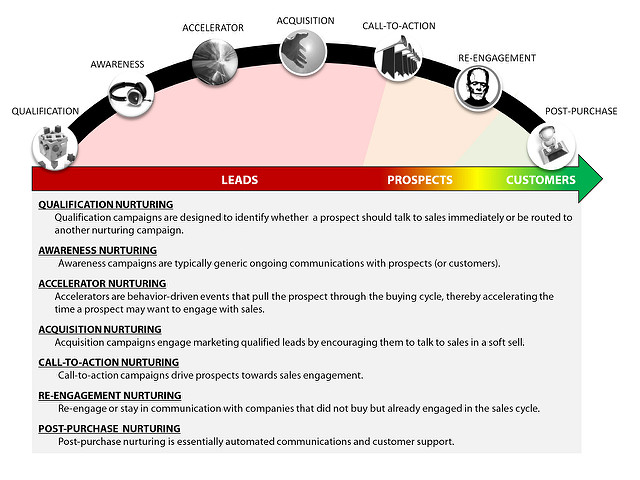
So you’ve gotten the hang of the sales funnel and of the need for lead nurturing. You’ve effectively started producing content to match each persona at each stage and have started approaching leads at different stages with different types of content. Your lead gen has picked up, conversion rates have grown and you feel things are going well. Chances are – you are correct.
But then again, there’s always room for improvement. If you want to optimize the process even more, pick up a great deal of leads that get lost along the way, and create an effective and dynamic marketing approach you need to go advanced. Behaviour-triggered lead nurturing (also known as behaviour-based) is one way to gear up your marketing efforts a few notches and achieve even better results. Here’s how!
What exactly is behaviour-triggered lead nurturing?
Behaviour-triggered lead nurturing is a more careful and attentive way to approach leads. It is based on the idea of sending them down the funnel in a way that is tailored to their needs, based on how they behave on-site – which pages they visit, what content they look at or search for.
Based on such signals, marketers can more carefully select whom they approach and in what way. But before you apply behaviour-triggered strategies, you need to understand how they work and what types of information you need to start monitoring. Marketing reports suggest that behavioral marketing holds great potential and but is still underused by marketers.
 From "The 2013 Lead Nurturing Best Practices Checklist" by Ian Michiels
From "The 2013 Lead Nurturing Best Practices Checklist" by Ian MichielsHow to execute behaviour-triggered lead nurturing
1. Data tracking and aggregation
Before you can analyse anything, you have to actually start tracking data, but that is a given. Once you’ve started accumulating data, you can start segmenting and analysing it. Is there a piece of content that is really popular? Track it, and track follow-up behaviour.
The point of behaviour-triggered marketing and lead nurturing is that it’s the leads’ signals that you follow, instead of trying to force them into a ‘one size fits all’ approach. Leads behave in unique ways and though in the end, you will come up with a variety of automated responses and actions, these will be by far more complex and particular than if you were to apply one single criteria and rationale to lead behaviour.
2. Data analysis and segmentation
Ideally, your data tracking should result in real-time, adequate responses to leads. Each action of a visitor is tracked and, depending on its character, triggers a certain form of reaction on your side. For this to be the case, you need to include behavioural data in an actionable marketing database, where you can react to it immediately.
As you aggregate more and more data, you can start experimenting with different responses to certain lead behaviours. Say, for example, that a lead visited your FAQ or support page. If their behaviour indicates that they didn’t find what they were looking for, you could follow up with an e-mail, asking them whether they are in need of any product or service support.
3. Developing lead nurturing tracks
By developing lead nurturing tracks or pathways, you can segment your leads in different categories and apply trigger-based communications to them, while at the same time retaining a sense of order in terms of their location in the funnel. It also means that you can offer them the right type of content, depending on the behaviour they display, instead of applying the ‘you’re in the top so here, read this awareness article’ logic.
For example, you could have a ‘new leads’ track, an ‘accelerated track’ (for leads that are really eager to get to the bottom!) or, alternatively, a ‘lower intensity’ track (for those who are hard to convince and take their time – no need to push them). There’s many different tracks you could break your behaviour-triggered lead nurturing into and what’s even better is that leads can easily change tracks.
One lead might start out in one particular top funnel track, depending on where they came from, what behaviour they displayed next and where they left. Soon enough, though, due to factors which may or may not be known to you, they may develop a different type of behaviour. At this point it would be inadequate and maybe even off-putting to keep treating them as if they were still on the old track. Hence, you have to adjust according to their new behaviour.
4. Advanced behaviour-triggered lead-nurturing
There really is no limit to what kinds of behaviour you can track. Their relevancy and how much information you can extract from them depends on the context of a lead’s actions. Did someone start watching a video, only to bounce off the page halfway through the video? Or maybe someone added a few products to their basket and then left the whole site abruptly?
What does all of that mean? It’s for you to find out, but it can potentially tell you a lot, especially if there are recurring instances of such behaviour on particular pages.
Conclusion
All of the above is just an outline of the potential applications and benefits of behaviour-triggered lead nurturing and communications. But their value is undisputed – lead behaviour is an immense source of data, only waiting to be tapped into.


